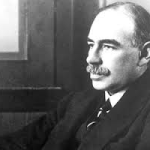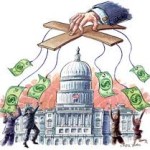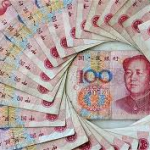- GOLD IRA
- Download Our 2024 Precious Metals IRA Investor’s Guide.
Click Here  Gold IRA
Gold IRA
 Investing
Investing
-
- CRYPTO IRA
- PRICES & STATS
- RETIREMENT PLANS
- BLOG
 Questions? Call (888) 820 1042
Questions? Call (888) 820 1042
End of an Era: The Decline of the Dollar is Near
Disclosure: Our content does not constitute financial advice. Speak to your financial advisor. We may earn money from companies reviewed. Learn more
Last Updated on: 26th January 2015, 04:50 pm
This month marks the 70th anniversary of the Bretton Woods Conference, and the introduction of a new global monetary system. This conference contained representatives from 44 different nations, jointly seeking to establish means of global trade, financing and inflation control.
The agreement that was finally reached set the stage for one of the great bait-and-switches of all time.
Setting the Stage
Consider the circumstances at the end of WWII: every major industrial power in the world was at least partially in ruin, save for the United States. The United States was the largest, most powerful economy on earth by a comfortable margin; global commerce moved as the United States moved.

At this time, the economic principles of John Maynard Keynes went unchallenged. It was assumed that governments needed to be able to print lots of money, run large deficits and engage in stimulus activity. The United States was in the driver’s seat, and they used it to create a system which both propped up their currency and allowed them to hoard gold.
The Bretton Woods Arrangement
It was agreed that all nations would hold US dollars as their primary “reserve currency”, instead of backing their money with gold. This would all be made possible by the United States making US dollars redeemable by gold at $35/ounce. Thus, the new “dollar standard” was a de facto Gold Standard. The US government couldn’t be trusted with the keys to this new car, however. Once it became apparent that they could print more money than could be backed by their gold reserves and still maintain demand for dollars, the latitude for extra spending lead to massive deficits. Welfare and warfare both followed. The world still continued to hold onto US dollars, even when it became more apparent that they weren’t really backed by gold in full. America had a blank check. By the early 1970s, many holders of US dollars began to redeem them for gold. Then the Nixon Administration finally ended the façade, completely severing the link between the US dollar and gold. The entire world monetary plan hinged on this convertibility, and the United States dropped it at the first sign of trouble.

Not Learning Their Lesson
Our political system is rigged against fiscal responsibility. The immediate political needs of today will trump the budgetary constraints of the future. Even measures designed to promote fiscal prudence – such as the establishment of the Federal Reserve to maintain the value of the currency – end up unmitigated disasters. Our constant election cycles make politicians kick the can down the road. Our reliance on a tired philosophy of economic stimulus gives the White House and Congress the justification to borrow and spend with abandon. And in the four-plus decades following the disaster that was Bretton Woods, our government has only gotten worse. Each new administration redefines what it means to run deficits. Our government is now indebted to a level unmatched in the history of civilization. The US dollar has lost over 97% of its value since the Federal Reserve was founded 100 years ago. Prices continue to rise, interest rates on deposit accounts and investments continue to suffer, and the government continues to print, print, print, print… The United States was handed unprecedented geo-political capital at the end of WWII. They’ve now spent all of it, and challengers are rising.
The US Dollar’s Competition
The European Union’s failure with the euro has artificially propped the dollar for a few years, but the Chinese and Russians seem bent on ending American monetary hegemony. The renminbi is now poised to overtake the US dollar as a chief international reserve currency.

Now, a conference in Brazil (with the Indians, Russians and Chinese partaking) is attempting to create a new global bank to compete with the US-friendly World Bank. While dollars continue to lose value, the renminbi has a government dedicated to making it stronger. This is just more evidence that savings held in cash are vulnerable. Bitcoin is the first major wave at creating a non-governmental alternative to fiat currency through digital technology – it will not be the last. What happens when nobody demands dollars anymore? When foreigners stop floating the inflated budget of the United States, there will be a reckoning. In fact, some gold manufacturers are already creating bars that can act as convenient currency in the event of major financial collapse. Unfortunately, when currencies collapse, someone is left holding the bag. You don’t want to be one of those left with just pieces of paper that used to mean something.



 Silver
Silver Gold
Gold Platinum
Platinum Palladium
Palladium Bitcoin
Bitcoin Ethereum
Ethereum

 Gold: $2,387.15
Gold: $2,387.15
 Silver: $27.92
Silver: $27.92
 Platinum: $931.02
Platinum: $931.02
 Palladium: $903.43
Palladium: $903.43
 Bitcoin: $67,910.26
Bitcoin: $67,910.26
 Ethereum: $3,278.81
Ethereum: $3,278.81
I recently heard Hong Kong may drop the US dollar too. Things are really get heated for the American dollar. BRICS is doing a lot of good work on their end too. I really don’t know what the future holds but one thing for sure, it’s diversification time!